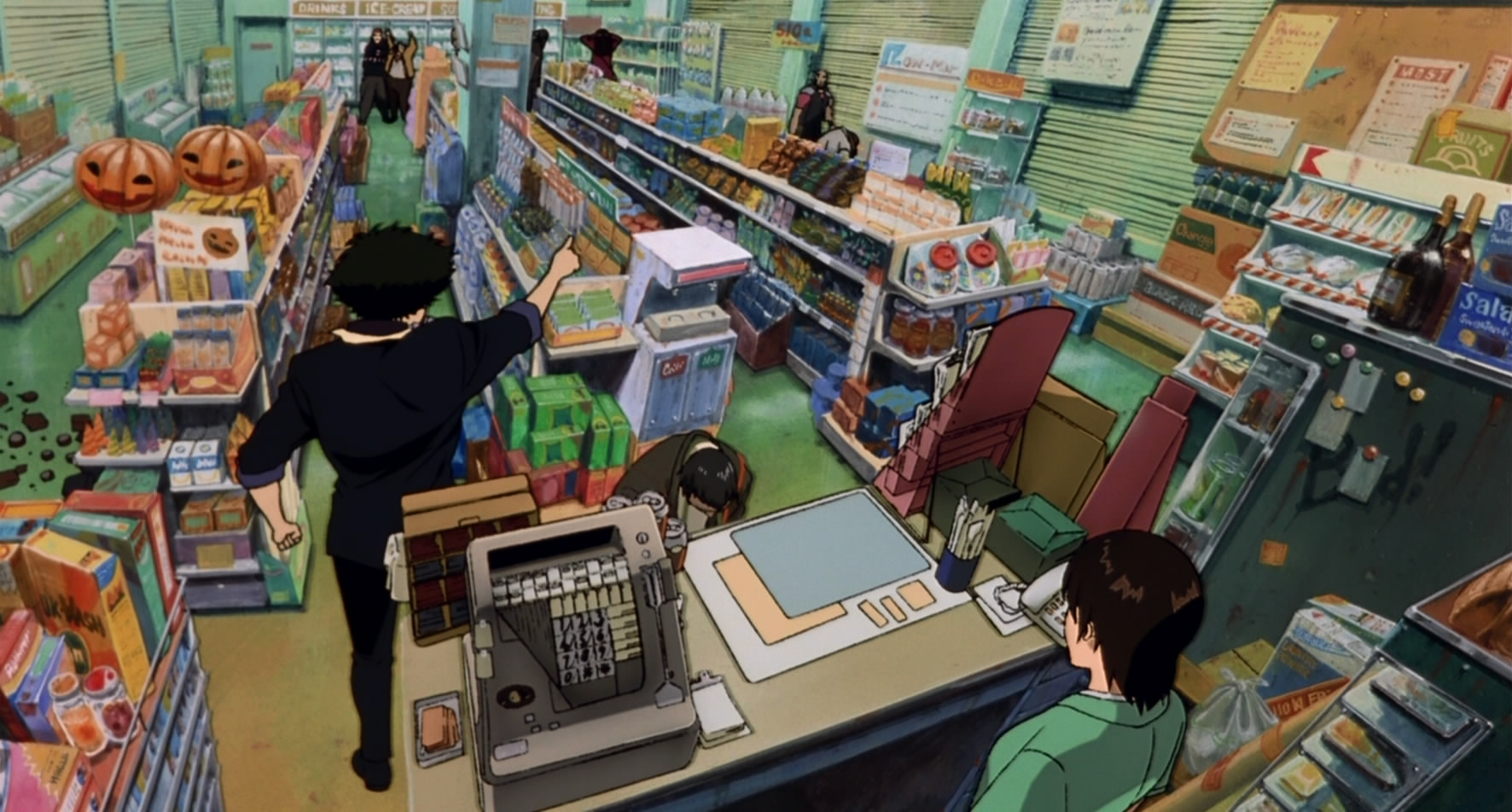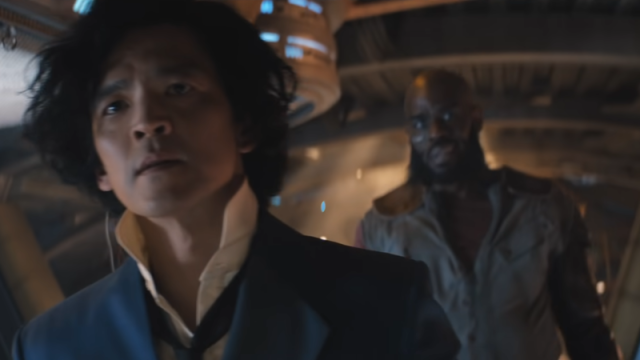There’s a lot that feels off about the live-action Cowboy Bebop, a show dancing to a rhythm that’s close to, but not quite, the smooth one shared by its seminal animated inspiration. But one of the strangest moments of bad rhythm is one that might take you a little while to notice at first: what on earth is its obsession with Dutch angles?
Like the Dutch angles in the original Thor, the realisation of Bebop’s preponderance for the canted camera angle — sometimes subtle, sometimes harsh, and yet present in what can feel like every other cut of the camera in the Netflix series — can come as something of a slow burn, but once you realise that you’ve been watching John Cho, Mustafa Shakir, and Daniella Pineda at increasing amounts of angles for a couple of hours, you cannot escape noticing it every time it happens again. And it happens again a lot. Our lens into the series’ imagination of Shinichiro Watanabe’s iconic anime is more often than not viewed in these oblique angles. The camera pivots through quiet moments, close-ups and panning shots, moments of action and moments of establishing, perpetually titling our perspective.

This isn’t necessarily always a bad thing. Used effectively, the Dutch angle can evoke senses of unease and discomfort, of an alien surreality that can evoke tension as much as it can abstract reality. But Bebop’s fascination with the technique means that everything from the menacing ranting of Alex Hassell’s Vicious to something as simple as an establishing shot of the jazz act at Ana’s bar is treated with this same method, ironically flattening the cinematography of the show so that one jaunty angle blurs into the other. Instead of evoking a sense of cinematic energy (perhaps to make up for a lack of it elsewhere in Bebop’s humdrum vibe), one Dutch angle after another, and another, and another just becomes visually confusing at first, and perhaps maddening after you can’t stop noticing it.
Perhaps most of all however, Bebop’s love of the Dutch angle undoes the show’s own search for meaning in its existence: it makes the series look cartoonish in a way. And perhaps that was the intent! That, by putting that abstraction in our minds, on top of all of its other visual and thematic references to its source material, we might find ourselves blurring the lines between its live-action self and the original anime, creating a heightened reality that doesn’t quite feel real, despite the flesh-and-blood people of its world. Not only does Netflix’s Cowboy Bebop fail quite spectacularly in this regard — if you cast aside the neck-craning camera angles, its muted colour palette and lighting and the relatively staid clip of its performances (outside of Pineda’s Faye Valentine, injecting every other line with a lively, occasionally too lively, stream of curses to give the show the semblance of a pulse) bring its world back down from any semblance of “heightened” rather quickly. It also, in its quest to make itself both like its source and removed enough from it to have its own visual identity, completely fails to get what makes the anime’s cinematography and visual language work in the first place.

It is not just in aesthetic that the original Cowboy Bebop grounds its sci-fi, near-future world, a mishmash of analogue and digital. If anything, the anime is inverse to its Netflix counterpart in its approach to cinematography. If Netflix Bebop’s Dutch angle a-go-go aims to evoke that kind of animated surreality, the anime, especially its cinematic continuation Knockin’ On Heaven’s Door, goes to great technical length to frame itself as if shot like a live-action show. Its camera is rooted in and moves through its world like a living, breathing, three-dimensional space, crafting shots that are incredibly well animated and flow like a real camera moving on a dolly. Cowboy Bebop’s future feels lived-in and real not just through the layers of aesthetic grime, but because its animators and artists treat our lens into that world as real as being in our own. And by being spartan with how much attention it drew to those endeavours, it makes the moments that Bebop allows itself to be exaggerated — whether in moments of suspense or comedy — stand out all the more starkly and effectively, instead of being drowned in trying to play the same tricks over and over.
Netflix’s Cowboy Bebop has real struggles in trying to balance a line between wanting to be its own thing and a recreation of one of the most beloved anime series of all time, but in its Dutch angles trying to twist and turn itself into a semblance of an original style, all it does is give us a crick in our necks.
